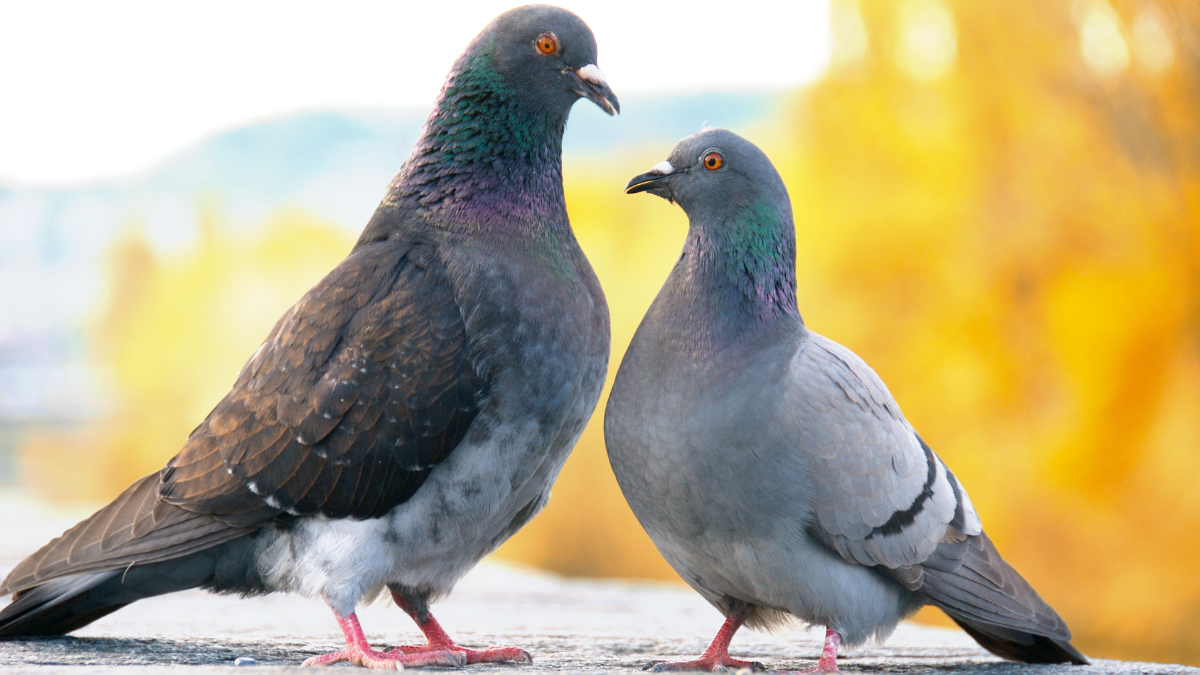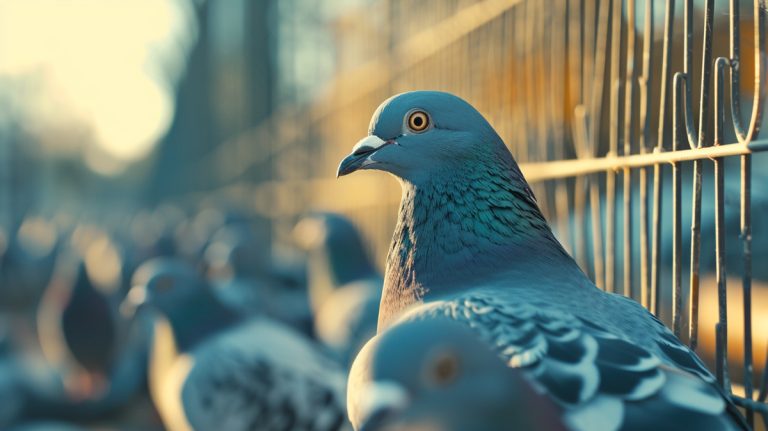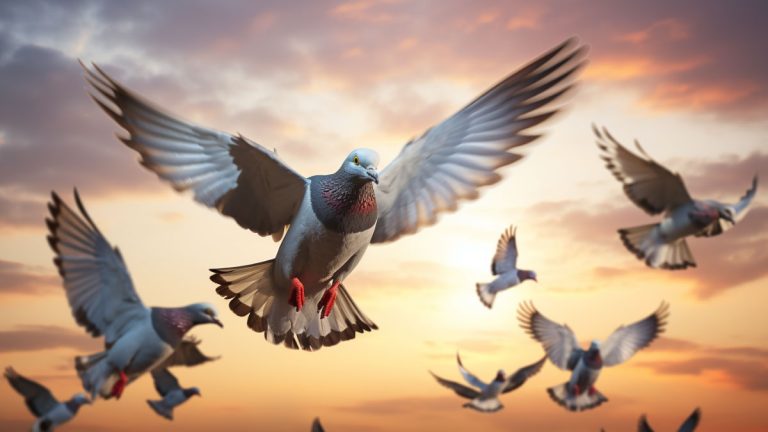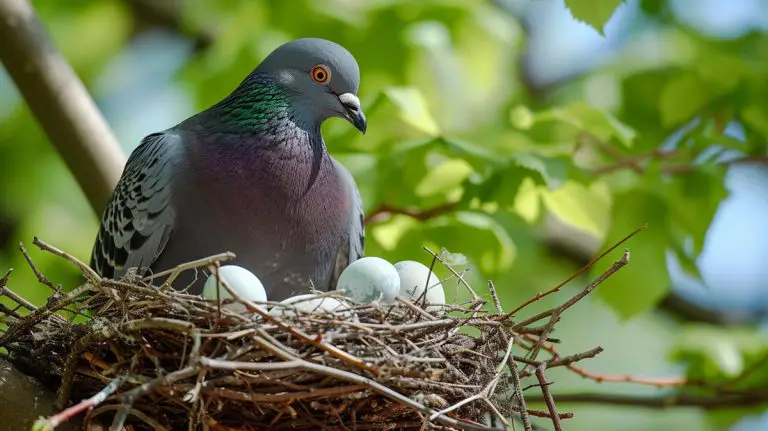How Pigeons Choose Their Mates: Signals and Preferences
Pigeon mate selection is the process by which pigeons pick a suitable mating partner based on factors like the mate’s color and size. This process is crucial to avian reproduction as it ensures the health of the offspring. More so, it prevents inbreeding, ensuring higher genetic diversity.
So, understanding the mate selection behaviors of pigeons is very important. This is because these behaviors can influence the pigeon’s overall health and viability. Also, it can help bird research institutions, bird enthusiasts, and students understand the mating behaviors of similar birds like the rock doves.
But how exactly do pigeons choose their mates? Please keep reading to find out the visual and acoustic signals they use. You will also discover the role of genetic harmony in all this based on evolutionary biology.
1. Visual Cues Used By Pigeons in Mate Selection
Interestingly, pigeons use visual cues to assess potential mates and decide who to pair with. These cues include the following:
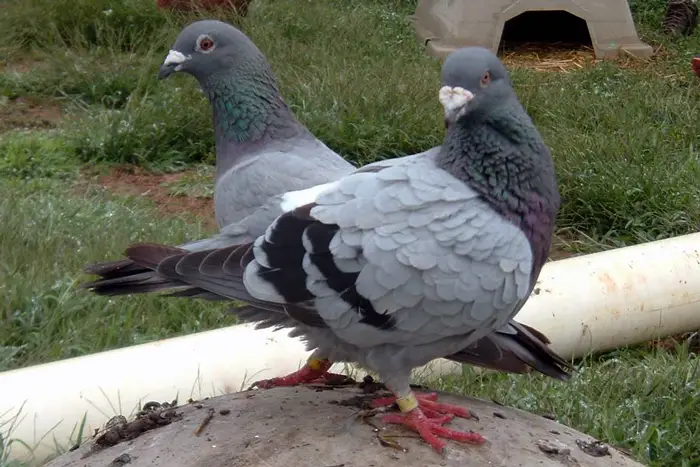
Feather Quality
Based on avian physiology, good-quality feathers in pigeons are a reflection of healthy birds and good breeding. Such feathers are usually silky, strong, waterproof, and flexible, making the birds look attractive to their potential mates.
Poor-quality feathers are usually indented on the edges, discolored, or brittle. In this case, pigeons would not choose mates with these feathers. This bird behavior is typical amongst all the species.
Size
Like most birds, pigeons prefer mates of the same or larger size during sexual selection. This is to help maximize their breeding success. For example, a larger male is more likely to choose a similar-sized female capable of successfully brooding all of their eggs. However, female pigeons prefer more significant-sized mating partners.
Plumage Coloration
Generally, male pigeons with brighter coloration on their back and chest are usually a preferred choice for many female pigeons. This is because, like feather quality, coloration is also a sign of a healthy mate. In addition, these birds prefer mates with similar coloration. This is a way to ensure genetic compatibility.
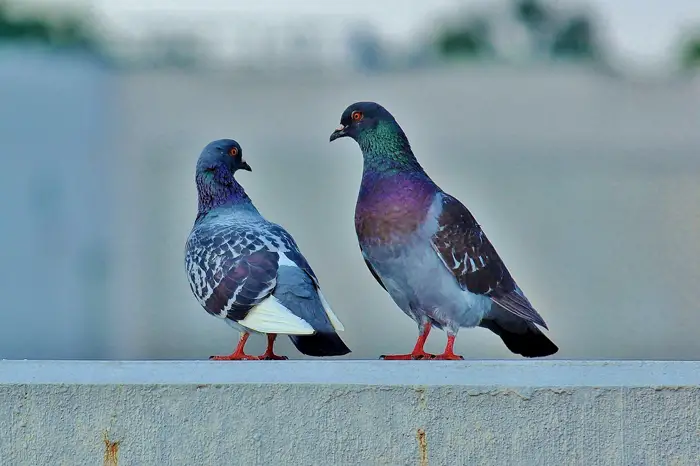
Potential Consequences of Visual Cue Variations On Pigeon Mate Selection and Reproductive Success
Variations in visual signs, including coloration, size, and feather quality, may significantly impact mate selection, including mate competition. For example, larger-sized females will hardly choose smaller-sized mates. In this case, smaller-sized males will be less successful in selecting a mate, decreasing their breeding success.
Similarly, brightly colored male pigeons with quality feathers are more likely to find mates quickly than their less colorful partners. As a result, this increases their reproductive success compared to those with damaged feathers. This is because female pigeons prefer mates with brightly-colored plumage.
2. Acoustic Cues Used by Pigeons in Mate Selection
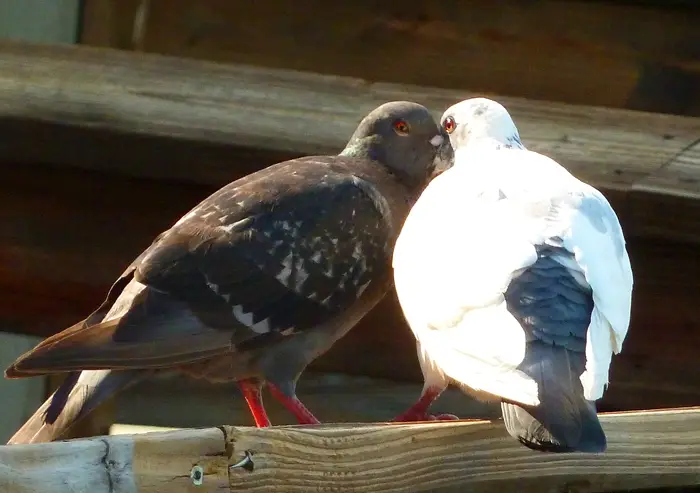
The use of acoustic signals is a common animal mating behavior among many bird species. Some of the cues pigeons use when selecting mates are:
Cooing
This animal communication behavior is expected when pigeons are trying to attract mates. Typically, these birds make a prolonged, deeper, and more throaty cooing sound from the nest.
However, male pigeons coo more than females, and the cooing noises are usually accompanied by the male’s mating displays.
Trilling
Apart from cooing, pigeons also have complex songs they use to gesture their attraction to potential mating partners. These songs have two individual parts, including the trill and the whistle. The whistle is the song’s introductory segment, while the trill is the melodic bit.
Role of Acoustic Cues in Mate Selection and Courtship Behaviors
The above pigeon mate selection cues are essential to the pigeons’ breeding success. This is because they convey critical information about the pigeons’ genetic quality, receptivity to mating, and dominance status.
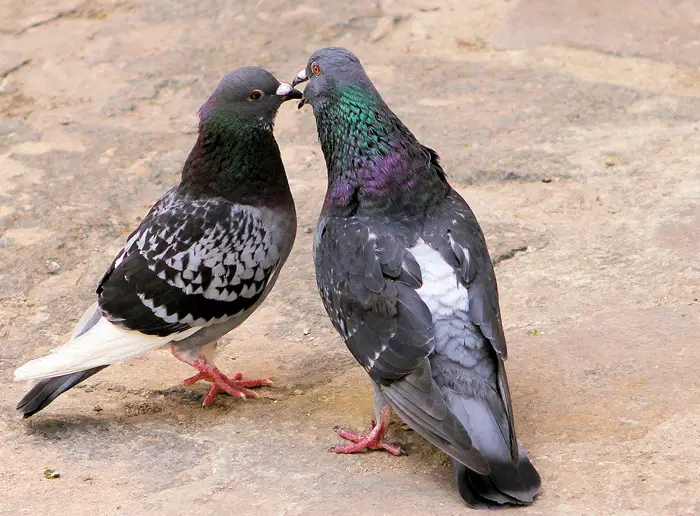
For example, male pigeons that produce complex songs during courtship are more likely to attract mates quickly than their counterparts. Also, the males have to wait for the females to make cooing sounds. This usually indicates that the females are receptive to the males’ advances.
Ways that Acoustic Cues Can Indicate Mate Quality and Influence Pigeon Mate Selection
First, the pitch of the cooing sounds can convey critical information about mate quality. For example, male pigeons that coo at higher pitches are considered to have more genetic diversity.
Typically, genetically diverse males are expected to be in excellent physical condition, which is critical for parental investment. Consequently, this makes them better mates for breeding.
Another way these pigeon mate signals may influence mate selection is through vocal complexity. Generally, female pigeons are more attracted to male pigeons that have more complex vocalizations. This is because the complexity of their vocalizations indicates their overall fitness and higher genetic quality.
3. Role of Genetic Compatibility in Pigeon Mate Selection and Reproductive Success

Enough with acoustic cues! Generally, pigeons prefer mating with partners that have similar genetic makeup. When two pigeons are genetically compatible, their genetic makeup can produce healthy offspring not prone to genetic diseases. Simply, gene compatibility helps prevent giving rise to offspring of incompatible genotypes.
Pigeon genetic compatibility may also influence the pair’s bond, which is critical for successful breeding. In addition, compatibility helps avoid inbreeding, which could minimize genetic diversity.
Overview of the Factors that Influence Pigeon Genetic Compatibility
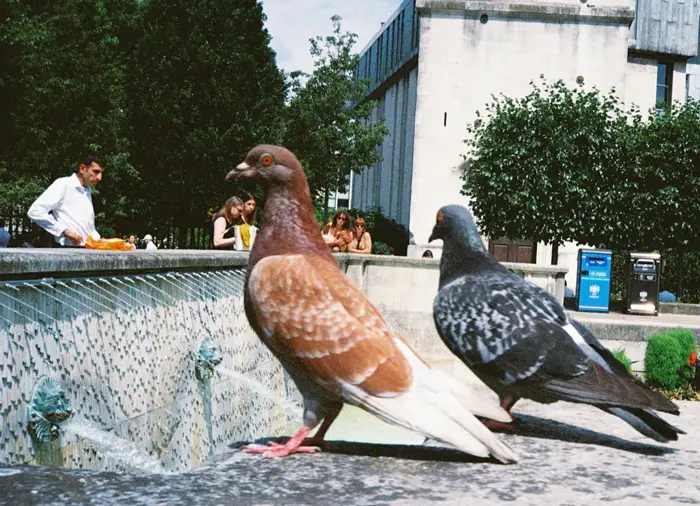
The following factors influence the pigeons’ genetic compatibility in mate selection.
- Immune System: One of the factors influencing gene compatibility in pigeons is the immune system of both mates. When both are in good physical condition, they are more likely to produce healthy offspring with a robust immune systems. This makes them genetically compatible.
- Genetic Diversity: Another factor is genetic diversity. This factor is critical for pigeons to adapt to changing environments because of the many different traits. So, pigeons will choose mates with higher genetic diversity.
Potential Consequences of Genetic Compatibility Variations on Pigeon Mate Selection
The pigeon breeding pairs may not produce viable offspring if they are not genetically compatible. Or, they may have offspring more susceptible to diseases and with undesirable traits. Consequently, this may negatively affect the health of the overall pigeon population over time, including diversity.
4. Importance of Mate Preferences in Pigeon Mate Selection
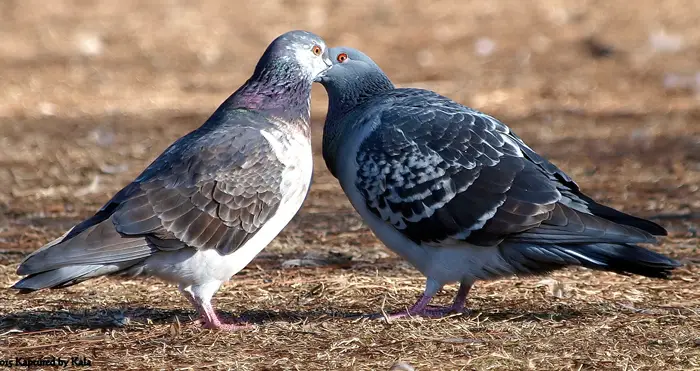
Mate preferences, quality, and compatibility are very crucial in mate selection. This is because by choosing mates with desirable traits, pigeons can improve their breeding success and the population’s genetic diversity.
Pigeon mate preferences, compatibility in mate selection, and mate quality also ensure the pigeons produce healthy offspring.
Overview of the Factors that Influence Pigeon Mate Preferences
If a pigeon has had a positive personal experience with a particular mate, it will be likelier to choose them. But if their experience was lousy, the chances of the pigeons choosing them for a mate will be minimal.

Additionally, social cues like plumage coloration and feather quality may influence the preference of a mate. According to different animal behavior experts, pigeons also use signals like vocalizations to assess the suitability of mates.
Potential Consequences of Mate Preference Variations on Pigeon Mate Selection
When there are variations in mate preference, this may have consequences on mate selection. For example, if the pigeons choose mates with brighter plumage, the population will be flooded with brightly colored pigeons. So, the population of dull-colored birds may reduce.
Similarly, if the females prefer mates with longer tails, this could result in a higher proportion of males with this feature. Consequently, there will be a higher chance of successful mating for male pigeons with longer tails than those with shorter ones.
If you’re interested in learning more about pigeons, their mating behavior, and their genetic characteristics, you may also find our articles on the development of pigeon chicks and pigeon genetics informative. Our article on development of pigeon chicks explores the various stages of growth and maturation that pigeon chicks go through, shedding light on their development process. Meanwhile, our article on pigeon genetics delves into the fascinating world of pigeon genetics, discussing how different genes influence the traits and characteristics of pigeons. These articles provide valuable insights into the reproduction and genetic makeup of these remarkable birds.Conclusion
Besides the visual and acoustic signals, gene compatibility also plays a critical role when it’s time for pigeons to choose mates. This is because these pigeon mate selection strategies usually determine breeding success and genetic diversity. Having said that, continued research is required to shed more light on the different behaviors of pigeon mate preference.
This is because the bird’s mate selection process plays a critical role in avian reproduction by ensuring healthy offspring. Consequently, this ensures the pigeon population does not decrease. Besides that, we suggest further study about avian ecology research to better understand mate selection in pigeons.
